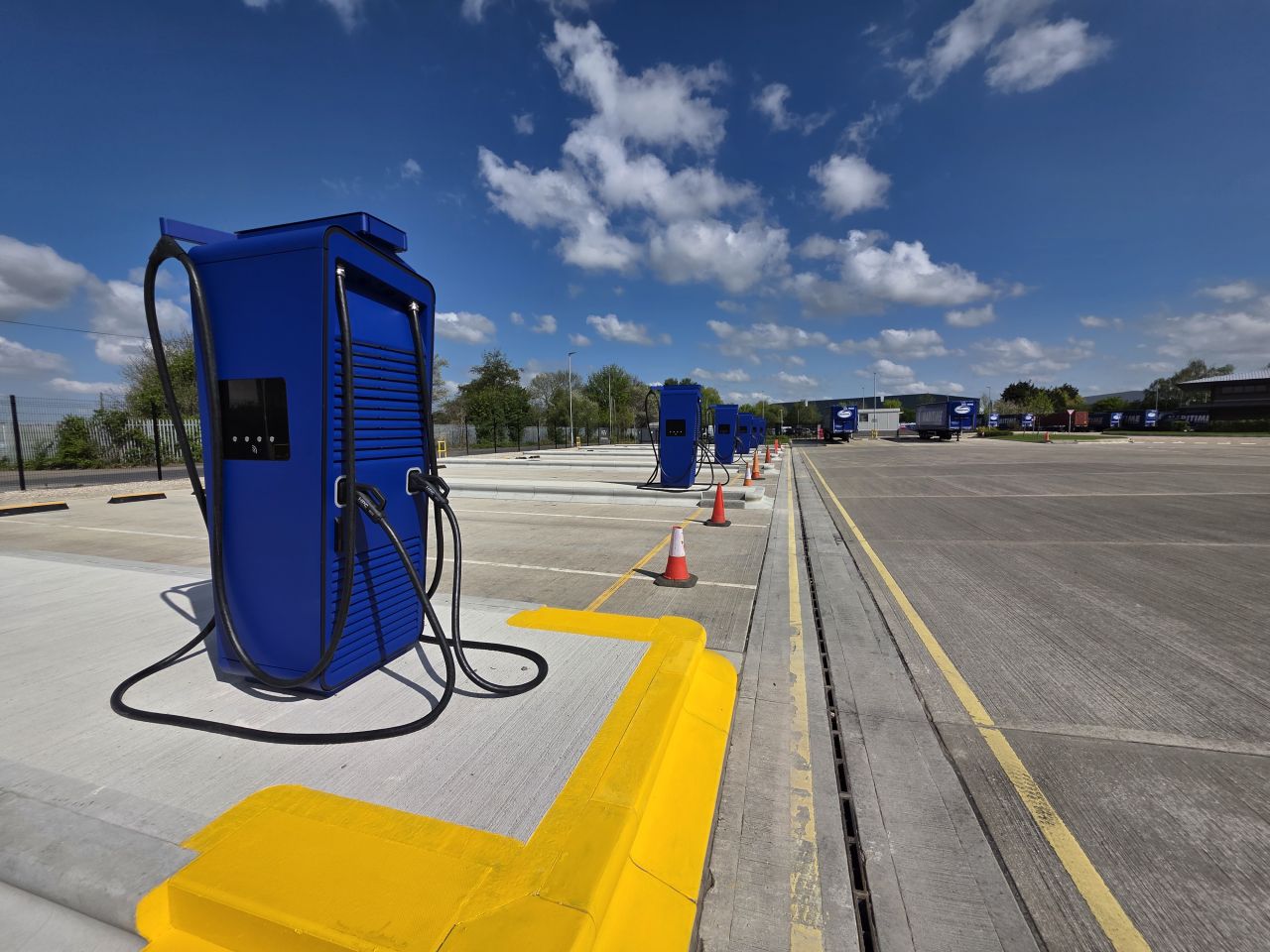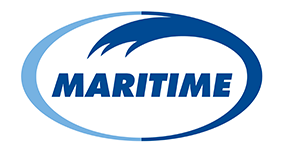VEV and Maritime Transport to deliver first phase of truck charging infrastructure
Posted 8th May

- Fleet electrification innovators come together to lead transformation of three UK transport hubs.
- Electrification programme to deliver one of the largest networks of EV transport charge points in the UK.
- Maritime’s first battery-electric trucks come on stream this summer.
Installations are now in advanced stages of build at Mill Lane in Wakefield and London Distribution Park in Tilbury, with works due to commence shortly at iPort in Doncaster. These are the first sites in Maritime’s network to be electrified for zero-emission HGV operations. A total of 17 chargers are being installed across the three locations, with commissioning set to conclude in May. These installations form the initial phase of Maritime’s electrification journey, with additional charging infrastructure to be delivered through separate ZEHID projects at nine further port and rail-connected depots over the course of the year. Once fully operational, the network is expected to provide 16.5MW of installed power, enabling simultaneous charging for up to 98 battery-electric trucks, with unit capacity ranging from 100kW to 1MW.
As Maritime’s appointed electrification partner for this phase of the rollout, VEV is delivering end-to-end site design, infrastructure development, software integration, charger maintenance, and ongoing fleet analysis.
Deputy Chief Executive Officer, Tom Williams, Maritime Transport:
‘It’s rewarding to see tangible progress being made on our decarbonisation journey. As a leading participant in the government-backed Zero Emission HGV and Infrastructure Demonstrator, Maritime is delivering the infrastructure to support the widescale deployment of battery-electric vehicles. Our partnership with VEV has been instrumental in this phase of the rollout, combining technical expertise with the scale and ambition of our network. This marks a major step forward in building a cleaner, more sustainable full-load supply chain and strengthening the support we offer to customers as they reduce emissions across their operations.’
Mike Nakrani, Chief Executive Officer, VEV:
‘This is a complex programme, but one with all the ingredients for success from the start, in terms of government backing and great leadership from the team at Maritime. The results of the VEV-Maritime partnership speak for themselves – the biggest network of EV charge points for the transport sector, the largest articulated EV fleet in the country, and a key step in the UK’s electrification journey.’
*Heavy goods vehicles (HGVs) are the backbone of the UK’s supply chain, but they also account for a significant 20% of domestic transport CO2 emissions. As the nation races toward its net zero emissions target by 2050, decarbonising HGVs presents one of the toughest – yet most critical – challenges. The Zero Emission HGV and Infrastructure Demonstrator (ZEHID) programme, backed by circa £200m in funding from the Department for Transport and delivered in partnership with Innovate UK, is rising to meet this challenge. With a bold vision to deploy around 350 of the heaviest battery-electric and hydrogen fuel cell vehicles on UK roads, the programme will also fund and support over 70 public and depot-based infrastructure installations by 2030. This pioneering effort will not only accelerate the transition to zero-emission logistics but will also deliver transformative environmental and economic benefits.
The ZEHID programme unfolds in two key phases:
1. Procurement and Infrastructure Development (2024–2026): Building the foundation with critical charging and refuelling infrastructure.
2. On-Road Demonstration (2026–2031): Real-world trials of zero-emission HGVs, testing their capabilities in various duty cycles and operational scenarios.
Maritime is playing a leading role in ZEHID, taking part in three of the programme’s four pioneering projects: Electric Freightway, eFREIGHT 2030, and ZENFreight. Through these projects, the company will integrate over 50 battery-electric trucks into its fleet.
About VEV
VEV helps organisations deliver on their carbon reduction ambitions with an end-to-end fleet electrification solution that integrates across vehicles, charging infrastructure and power. VEV is owned by Vitol, a world leader in energy, which to date has committed circa $2 billion to sustainable energy initiatives worldwide.
VEV navigates the complexities of EV transformation to design and implement cost-effective EV fleets optimised for specific fleet requirements. It supports EV fleet operations to guarantee resilience and keep mission-critical fleets running at scale. Bespoke, scalable business solutions are designed around the customer’s own fleet data analysed by a powerful assessment tool, VEV-IQ, and VEV’s experts in energy and sustainable e-mobility. VEV sets businesses up for success in an electrified future. More information at VEV.com
About Maritime Transport Ltd.
Maritime Transport is the UK’s leading provider of integrated road and rail freight logistics, delivering a range of services spanning container transport and storage, domestic distribution, warehousing, freight management, and truck sales. Today, the company employs 3,200 personnel across 41 sites including nine strategic rail freight terminals, operating 1,600 trucks, 100+ terminal machines to support efficient handling operations, and over 30 daily rail services, together forming the backbone of its operations to provide customers with supply chain service, security, and choice for first and final miles. More information at maritimetransport.com



